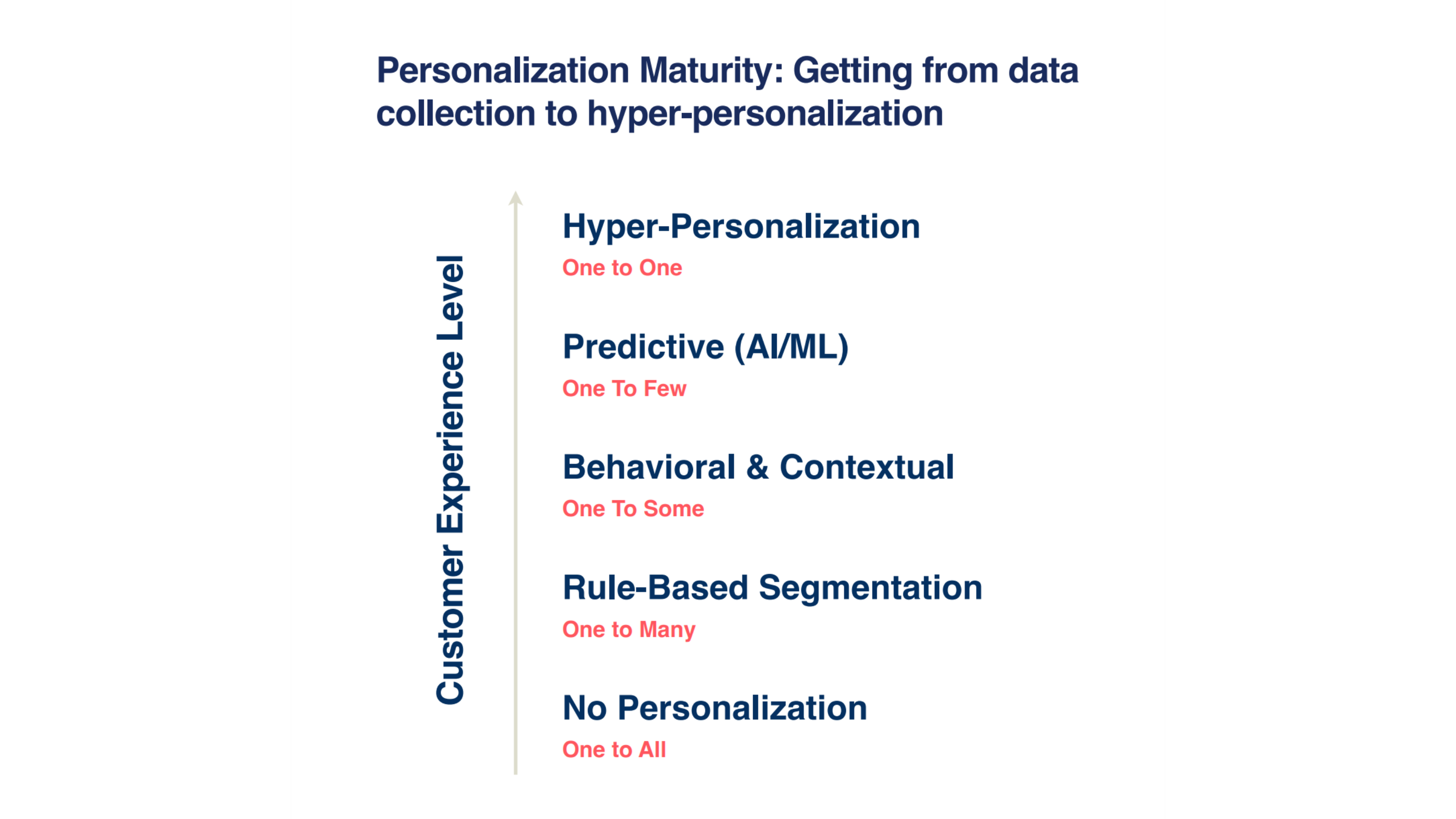
Hyper-Personalization at Scale: Unlocking Business Growth with Adobe Experience Platform


In today’s competitive digital landscape, customer expectations are higher than ever. Modern consumers want tailored, timely, and relevant experiences that reflect their needs and preferences. Enter hyper-personalization—a data-driven, real-time approach to customer engagement that has become essential for brands striving to build loyalty and increase conversions.
According to McKinsey, 71% of consumers expect companies to deliver personalized interactions—and 76% get frustrated when this doesn’t happen. In fact, companies that excel at personalization generate 40% more revenue from those activities than average players.
Hyper-personalization—leveraging real-time data, AI, and machine learning to deliver individualized experiences—has emerged as a key strategy for businesses aiming to meet these expectations and drive growth.
Understanding Hyper-Personalization
Hyper-personalization goes beyond traditional segmentation by utilizing real-time data and advanced analytics to tailor experiences to individual customers. This approach enables businesses to deliver relevant content, offers, and interactions across all touchpoints, enhancing customer satisfaction and loyalty. It’s about understanding not only who a customer is, but what they need right now and predicting what they will do next. Unlike traditional personalization based on static rules (like job title or industry), hyper-personalization continuously adapts to customer behavior across channels—web, mobile, email, and even offline touchpoints.
Levels of Personalization Maturity
Not all personalization is created equal. Many organizations believe they have enabled personalized experiences because they insert a first name in an email or target a broad audience segment. But true hyper-personalization requires a much more advanced and real-time approach—powered by unified data, AI, and orchestrated journeys across channels.
To help organizations assess where they are today and identify what’s possible, it’s helpful to view personalization as a maturity curve, with increasing levels of sophistication and business impact. As brands move up the maturity curve, the ability to deliver relevant, real-time, and scalable experiences increases.

Implementing hyper-personalization strategies can support:
Revenue Growth: According to Boston Consulting Group, brands that implement personalized experiences see revenue increases of 6-10%, often two to three times faster than those that don’t.
Customer Retention & Loyalty: A Salesforce report found that 84% of customers say being treated like a person, not a number, is very important to winning their business.
Operational Efficiency: By automating the delivery of relevant content and offers, marketing teams can reduce spend and improve campaign ROI.
The Modern Tech Stack for Hyper-Personalization
Adobe Experience Platform (AEP) provides a flexible, composable foundation for hyper-personalization, with a suite of interconnected applications that unlock real-time, data-driven engagement across channels:
Adobe Real-Time Customer Data Platform (RT-CDP): Builds dynamic, privacy-compliant customer profiles by unifying data across online and offline sources, enabling instant decision making.
Adobe Journey Optimizer (AJO): Orchestrates personalized customer journeys across channels — email, push, in-app, SMS, and web.
Adobe Target: Powers A/B testing and personalization of web and mobile experiences, ensuring content resonates with individual users.
Adobe Customer Journey Analytics (CJA): Connects and analyzes real-time behavioral data across channels to uncover deep insights and optimize performance.
One of the foundational capabilities AEP RT-CDP has is digital identity resolution, the ability to recognize and unify customer profiles across channels and devices in real time. Without this, personalization efforts are fragmented and less effective. As outlined in Rightpoint’s article, a strong identity resolution strategy is the cornerstone of enabling a single customer view, which fuels advanced targeting, segmentation, and personalized decisioning.
AI’s Impact on Hyper-Personalization
AI has revolutionized hyper-personalization by enabling brands to move beyond simple customer segmentation to delivering dynamic, highly tailored experiences at scale. AEP leverages AI-driven features to enhance personalization by combining real-time data insights with predictive analytics, enabling brands to anticipate customer needs to deliver customized experiences.
One of AI’s key contributions is its ability to analyze vast amounts of data in real time, including behavioral patterns, purchase history, and even contextual signals like location or weather. For instance, AI-powered systems can identify when a customer is likely to browse versus purchase and adjust promotional strategies accordingly. This anticipatory approach not only enhances customer satisfaction but also drives conversions and long-term loyalty.
AI also enables brands to engage with customers across multiple touchpoints seamlessly. Adobe’s AI tools integrate with applications like Target and AJO to refine customer journeys, personalizing messaging not only for web and email but also for in-app and offline interactions, ensuring seamless communication at every touchpoint. This harmonization fosters consistency and builds customer trust.
Moreover, AI-driven personalization has redefined customer support and engagement. Chatbots and virtual assistants powered by AI can offer instant, personalized responses to customer inquiries, significantly improving resolution times and satisfaction. Adobe Brand Concierge, launching in 2025, will transform customer browsing into hyper-personalized experiences through AI driven conversations.
Adobe’s AI-enabled features have supported redefining hyper-personalization by automating the complexity of analyzing vast datasets and predicting outcomes. This allows businesses to focus on crafting strategies that enhance loyalty and drive growth, positioning AEP as the modern personalization tech stack.
Preparing your Organization
While the technology is powerful, realizing the full value of hyper-personalization requires more than just a software implementation. It demands strategic alignment, data readiness, and cross-functional collaboration.
While the technology is powerful, realizing the full value of hyper-personalization requires more than just a software implementation. It demands strategic alignment, data readiness, and cross-functional collaboration.
1. Establish a Clear Personalization Strategy
Define business goals: Are you aiming to improve customer retention, increase upsell opportunities, or reduce churn?
Align KPIs across marketing, sales, and IT teams.
Develop a personalization maturity roadmap, from basic segmentation to real-time, AI-powered decisioning.
2. Conduct a Data Readiness Assessment
Audit all existing customer data sources: CRM, web analytics, POS, support systems, etc.
Identify gaps, data silos, and integration challenges.
Ensure data quality and governance practices are in place to maintain trust and compliance. Consolidate data from various sources to create a unified customer view.
3. Establish Operational Efficiency
Hyper-personalization requires collaboration across marketing, IT, analytics, and data science teams.
Establish cross-functional governance, and appoint a product owner or personalization lead to drive adoption.
Upskill your teams or bring in experts (internal or partner-led) for Adobe Experience Cloud platform training.
4. Prioritize Privacy and Compliance
Ensure you have consent management, identity resolution, and data minimization practices in place.
Leverage Adobe’s privacy controls and audit trails to align with regulations like GDPR and CPRA.
5. Start with an MVP and then scale
Launch an initial use case with measurable ROI (e.g., cart abandonment email, personalized landing pages).
Test, learn, and optimize with Adobe Target and CJA.
Scale personalization efforts across more channels and segments over time.
Start Creating Personalized Customer Experiences
The age of mass marketing is over. Customers demand experiences that reflect who they are, what they care about, and what they need—right now.
Hyper-personalization represents a significant opportunity for businesses to enhance customer experiences and drive growth. By leveraging AEP and its suite of applications, organizations can deliver personalized, relevant experiences at scale, meeting customer expectations and achieving strategic objectives. But success starts with the right strategy, clean data, cross-functional alignment, and a commitment to delivering value with every interaction.
Whether you're just getting started or looking to optimize your existing personalization efforts, Rightpoint can help you determine your next steps. As an Adobe Platinum Partner, we support our clients to enable digital personalization at scale. Let’s start building hyper-personalized experiences together. Get in touch with an Adobe solution expert.


